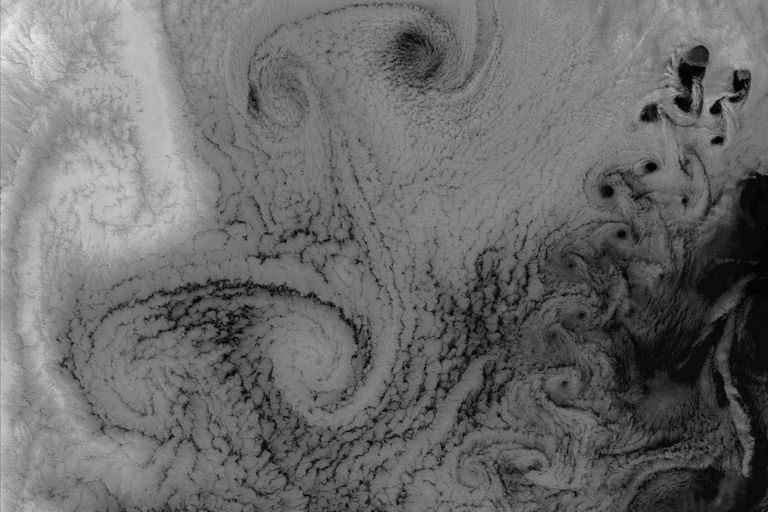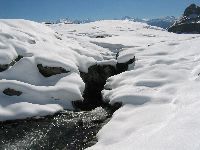Impacts of climate change on the water reservoirs: less snow and ice
Compared with the 1980 to 2009 period, the expected temperature increase until the year 2085 is 3° C ± 1° C. This is bound to have an impact on seasonal hydrological reserves in Switzerland: The increase in temperature will be accompanied by a rise in the snow line. The average area covered by snow is being continually reduced, as is the thickness and duration of the snow cover. Finally, the reserves of snow available for melting are decreasing. Some 40% of the stream flow out of Switzerland during the 1980–2009 period consisted of snow melt. This percentage will fall to about 25% by 2085. This will lead to an increasing proportion of precipitation being free to drain away immediately, particularly in winter. Less than 2% of annual flow is currently derived from the summer glacier ice melt, but on watercourses near glaciers this represents a significant percentage in summer. Because the glaciers – which react only slowly to environmental changes – are too large for current and future climatic conditions they will continue to melt rapidly. This will lead to higher stream flows in the alpine catchments, if only for a relatively short time: up to about 2040 for the larger glaciers (in terms of volume); on smaller glaciers flows are already decreasing again. By 2100 it is likely that only 30% of the current volume of ice will remain, mainly in the Rhone basin.


